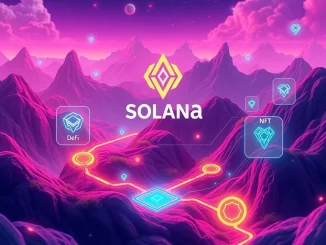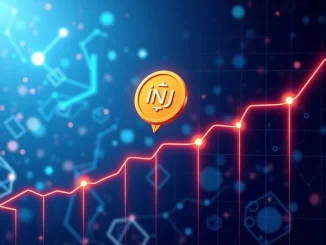
The world of blockchain technology is constantly pushing boundaries, seeking faster, more efficient ways to handle transactions and applications. For developers and users within the Ethereum ecosystem, the challenge of scaling has been a persistent hurdle. Enter **Sei Giga**, a groundbreaking initiative poised to redefine what’s possible with the Ethereum Virtual Machine (EVM).
What is the Revolutionary Sei Giga Whitepaper?
Jayendra Jog, the visionary co-founder of **Sei Labs**, recently took to social media platform X to announce a significant development: the release of the **Sei Giga** whitepaper. This document isn’t just another technical paper; it outlines a revolutionary approach to building a high-performance EVM environment.
At its core, Sei Giga proposes a multi-proposer **EVM scaling** solution built as a Layer 1 network. This means it’s designed from the ground up to address the limitations often associated with existing EVM implementations, particularly regarding speed and throughput.
How Does Sei Giga Achieve Unprecedented Speed?
The whitepaper details several key technical innovations that power Sei Giga’s performance:
- **Autobahn Consensus Protocol:** This new consensus mechanism is specifically engineered for speed and efficiency within the multi-proposer framework. It aims to streamline block production and finalization.
- **New Execution Client:** A custom-built execution client is designed to work seamlessly with the new consensus and architecture, optimizing how transactions are processed.
- **Asynchronous Execution and Storage Layer:** By separating execution and storage and allowing them to operate asynchronously, Sei Giga reduces bottlenecks and improves overall throughput.
These advancements work in concert to deliver impressive metrics:
- **Finality:** Under 400 milliseconds. This is significantly faster than many existing networks, meaning transactions are confirmed and irreversible almost instantly.
- **Throughput:** Up to 5 gigagas per second. This represents a massive capacity for processing transactions and complex smart contract interactions.
Why Does This Matter for EVM Scaling?
The pursuit of effective **EVM scaling** is critical for the continued growth of decentralized applications (dApps), DeFi, NFTs, and the broader web3 ecosystem. High transaction costs and slow confirmation times can hinder user adoption and developer innovation.
Sei Giga’s approach as a dedicated **Layer 1 network** built for this purpose offers a potential alternative or complement to existing scaling solutions like Layer 2 rollups. By optimizing the base layer itself, Sei Giga aims to provide a robust foundation for high-performance EVM dApps.
The work detailed by **Sei Labs** in the Sei Giga whitepaper represents a significant investment in tackling one of blockchain’s most pressing challenges. While still early, the concepts introduced suggest a future where EVM applications can operate at speeds and scales previously thought difficult on a Layer 1.
What’s Next?
The release of the whitepaper is typically the first step in a longer development process. The next phases would likely involve testnet deployments, audits, and community feedback. For developers and users interested in high-performance EVM environments, keeping an eye on Sei Giga’s progress will be essential.
This initiative highlights the ongoing innovation within the blockchain space, constantly striving to build more capable and efficient infrastructure for the future of decentralized technology.
Summary: A New Era for EVM Performance?
The **Sei Giga** whitepaper, unveiled by **Sei Labs** co-founder Jayendra Jog, presents a compelling vision for high-speed **EVM scaling**. By introducing innovations like the **Autobahn consensus** protocol and an asynchronous architecture on a dedicated **Layer 1 network**, Sei Giga promises finality under 400ms and throughput up to 5 gigagas per second. This development could pave the way for a new generation of performant EVM applications, addressing long-standing scalability issues and pushing the boundaries of what’s achievable in the decentralized world.



